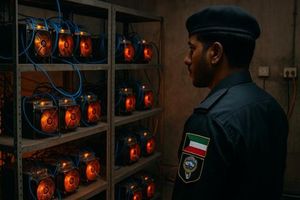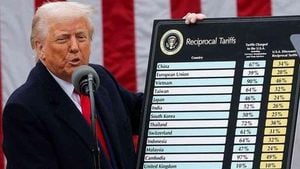The long-standing mystery surrounding the fates of the Princes in the Tower of London continues to deepen with newly uncovered evidence, stirring renewed interest and debate among historians and enthusiasts alike. For centuries, the disappearance of King Edward V and his younger brother Richard, Duke of York, has captivated and puzzled those who study this dark chapter of English history. With roots stretching back to 1483, the intrigue has oscillated between speculation and explosive claims of murder, primarily implicate their uncle, Richard III, as the orchestrator of their fates.
Channel 5 is set to air the documentary titled Princes in the Tower: A Damning Discovery, which highlights the fresh findings of Tim Thornton, Professor of History at the University of Huddersfield. Thornton has painstakingly looked through historical records and stumbled upon what he describes as the first solid piece of evidence related to the princes’ possessions found in over 500 years. The program is slated for December 3rd at 9 pm GMT.
The crux of this new investigation revolves around Lady Margaret Capel's will, dated 1516, which includes mention of Edward V's cherished chain. Capel was the sister-in-law of Sir James Tyrell, who had close associations with Richard III and has historically been implicated as the one charged with carrying out the suspected murders.
Thornton stated, "After centuries of speculation and uncertainty about the fate of the princes in the Tower, we can now show... Tyrell had connections to those involved with the boys’ story, including the fact his family had ownership of Edward’s chain." He firmly suggests this finding might tilt the scales back toward Richard’s culpability, proposing, "While there are still strong arguments for his innocence, the balance is shifting toward his guilt." This assertion provokes thought on the longstanding narrative of Richard III as the villain of the piece.
Alongside Professor Thornton, the documentary features historian Tracy Borman and actor Jason Watkins, with Borman reflecting on the significance of this discovery. She noted, "This chain offers key insight, linking Edward V directly to someone entrenched within the murky dealings surrounding the throne's seizure." The chain is not just any ornament but is described as a royal chain of office, which at the time would have been highly symbolic and of irreplaceable value.
The potential link from the past shines new light on the infamous tales told about Richard III, especially those chronicled by Sir Thomas More, who painted him as the orchestrator behind the heinous act. Thomas More's writings from the 16th century included direct accusations against Tyrell, claiming he had hired two men to murder the Princes.
"This discovery intricately connects capable hands of power to the cherished object of the young king," observed Professor Thornton. The will provides intriguing perspective on how royal items like this chain might've been manipulated or dispersed amid the malevolent changes of power following King Edward IV’s death.
Yet skepticism exists, with Richard III's defenders arguing against what they term the 'new conjecture' being passed off as fact. Critics of Thornton’s finding argue it lacks definitive proof of murder intent and more so reflects the uncertainty typical of historical accounts.
On the other hand, Thornton's evidence harkens back to discussions within the historical community about finding indisputable links to lay accusations against Richard III. While much of this narrative has spun from the intrigue of gossip and hearsay over centuries, pieces such as the one involving Lady Capel’s will add fuel to the fires of speculation and debate that's rendered these details increasingly fascinating.
Borman aptly put it, saying, "The intrigue continues around this iconic fortress, and for over 500 years it has detached so many studies and thrilling stories. The compelling nature of the princes’ disappearance still garners attention, even today, showcasing its lasting legacy over the course of English history." The documentary promises to showcase how the stories of these princes' lives and their tragic ends resonate deeply, drawing viewers who find themselves invested not just in the royal narrative, but deeply entwined with the quest for truth.
Regardless of where one stands on the issue, it remains clear—new findings incite not just knowledge, but questions. Each bit of uncovered evidence fans the flames of intrigue around the enigma of the Princes in the Tower, leading many to wonder why this unsolved mystery still holds such weight after centuries.
The legacy of Richard III continues to polarize, viewed variously as the villain of history or the wronged uncle caught in the crossfires of his brothers' ambitions. Nevertheless, the tale of the two young princes remains one of the most haunting tales of English royalty, sharply reminding contemporary audiences of the costs tied to power and position.



